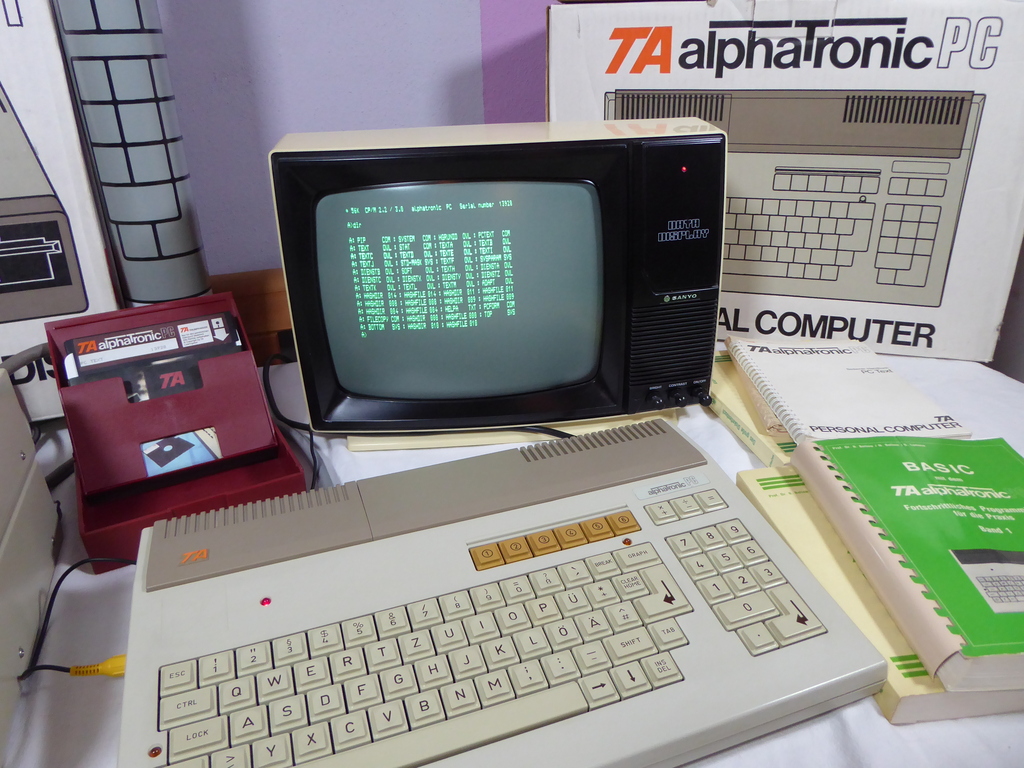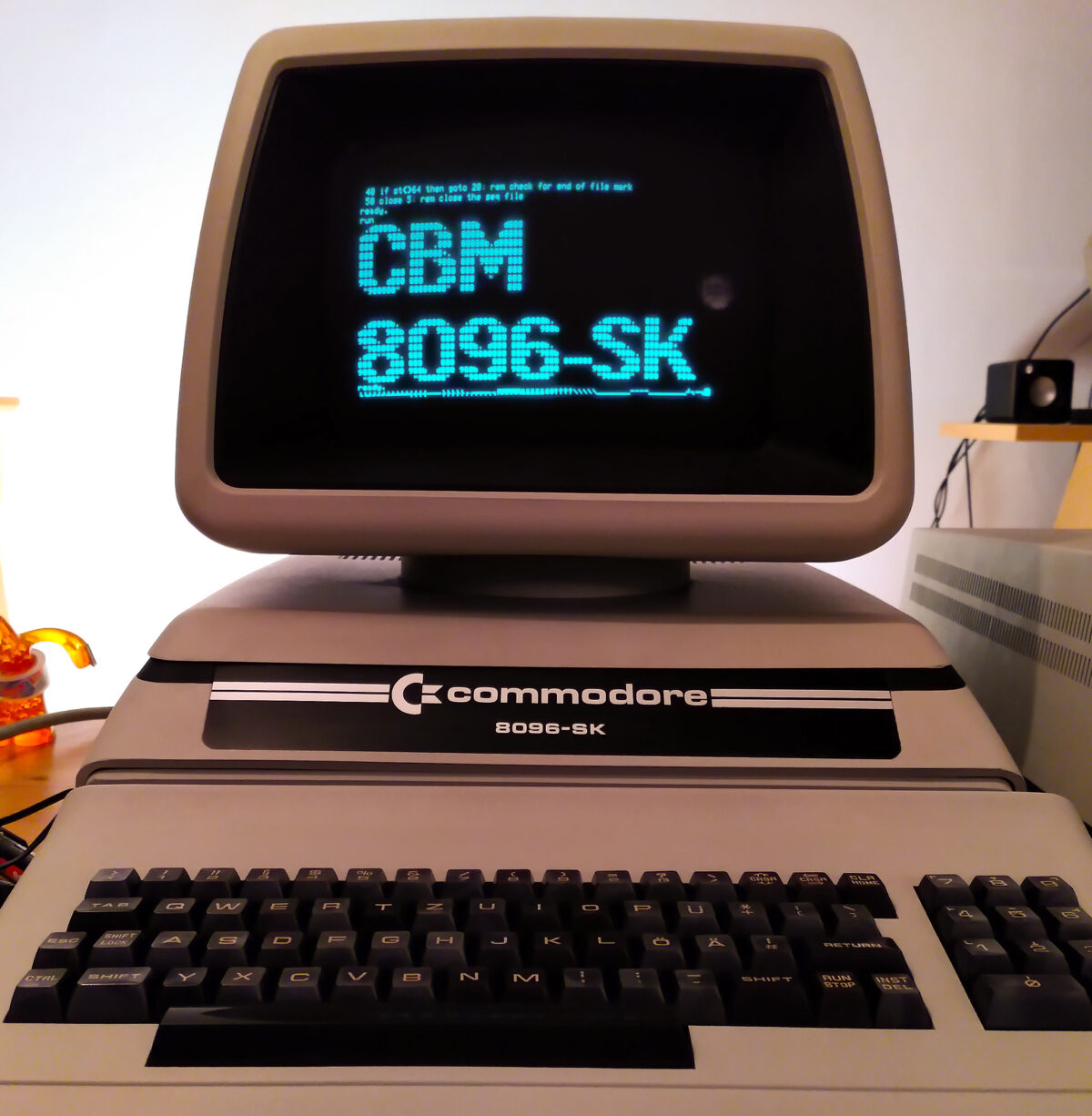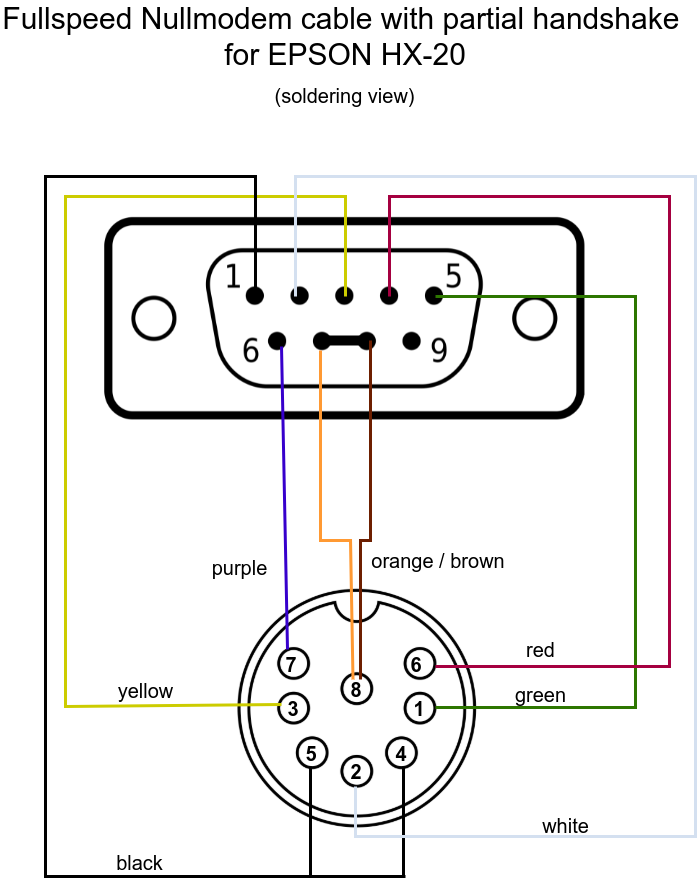For some time now, I can call myself the happy owner of a Commodore CBM 8096-SK. Before I introduce my own computer in more detail, I would like to give a brief overview of the Commodore PET and CBM series that were available during the 8-bit era from 1977 until around the mid-1980s. As it turns out, a brief summary is not that easy, as there were a sometimes confusing number of series and model variants. Nevertheless, I will try to give as concise an overview as possible.
Continue reading “Commodore PET/CBM Series Overview”Tag: Homecomputer
Full speed null modem cable for EPSON HX-20
To transfer software for the EPSON HX-20 from the PC, a so-called null modem cable is required. These cables usually have 9 pin D-Sub connectors at both ends. Therefore it is necessary to cut such a cable in the middle to solder a round 8 pin DIN connector to the open end.
For the HX-20 there are basically two variants for a data transmission cable. The simple variant requires only 3 cable wires, but has the disadvantage that no handshake or data flow control is possible. Ergo, only a low transfer rate is possible. I already presented such a simple cable here some time ago.
Here I now describe the more complex variant of a null modem cable, which is also suitable for higher transmission rates with data flow control. This allows a much more stable connection between PC and HX-20.
Continue reading “Full speed null modem cable for EPSON HX-20”TA alphatronic PC – A pretty German Personal Computer
Franconian (so called people from a German region in upper Bavaria) are rather reserved and quiet people. They prefer the cozy social gathering over a glass of beer or wine and the greatest praise of a Franconian is: “Bassd scho!”
Today I would like to present you a PC from 1984 of a former computer manufacturer from Franconia – more precisely from Nuremberg, the metropolis of Middle Franconia. It is the TA alphatronic PC from the company Triumph-Adler, a Z80 based 8-bit computer with 64 kB RAM, 32 kB ROM and integrated Microsoft Basic.

You can definitely compare the computer with the features of the Franconian: The PC has a simple, straight-lined case shape and it comes across rather inconspicuous and reserved. On the other hand, it impresses with its workmanship and inner values. A Franconian would say: “Bassd scho!”.
Continue reading “TA alphatronic PC – A pretty German Personal Computer”


